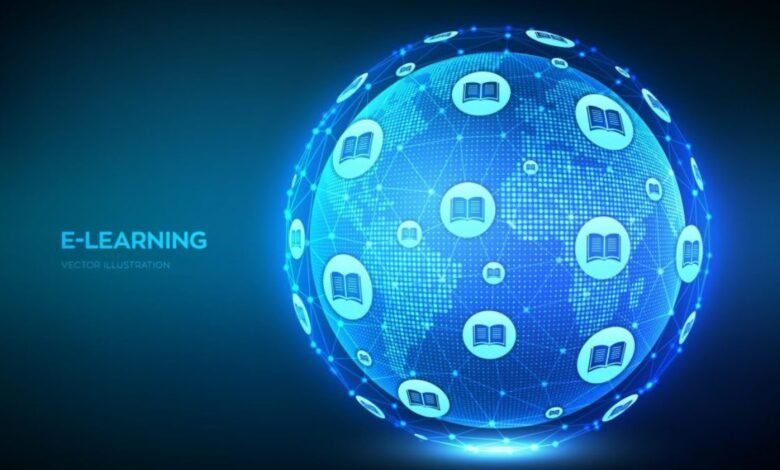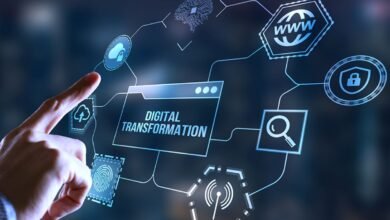The Influence of Technology on Modern Education: E-Learning and Beyond

Introduction
In the past few decades, technology has permeated almost every facet of human life, reshaping industries, altering communication methods, and revolutionizing education. The rise of e-learning and other technological advancements has significantly transformed the way education is delivered and experienced. This shift has been driven by a combination of technological innovation, increasing accessibility, and changing societal needs. This article explores the profound impact of technology on modern education, focusing on e-learning and its broader implications, and examines how these advancements are reshaping learning environments, pedagogical strategies, and educational outcomes.
The Rise of E-Learning
E-learning, or electronic learning, represents a significant shift from traditional classroom-based instruction to digital platforms that facilitate learning through the internet. This mode of education leverages various technologies, including online courses, virtual classrooms, and multimedia resources, to deliver educational content. The rise of e-learning can be attributed to several factors, including advancements in internet connectivity, the proliferation of digital devices, and the growing demand for flexible learning solutions.
One of the primary advantages of e-learning is its accessibility. Online education platforms break down geographical barriers, allowing students from diverse locations to access high-quality educational resources and instruction. This democratization of education has opened doors for learners who might have been excluded from traditional educational settings due to location, financial constraints, or other barriers. E-learning platforms also offer a wide range of courses and programs, catering to different interests and career goals, which enhances the ability of individuals to tailor their educational experiences to their specific needs.
Furthermore, e-learning provides a level of flexibility that traditional classroom settings often cannot match. Students can access course materials, participate in discussions, and complete assignments at their own pace and on their own schedule. This flexibility is particularly beneficial for adult learners who may be balancing education with work and family responsibilities. Additionally, e-learning platforms often incorporate interactive elements, such as quizzes, discussion forums, and multimedia presentations, which can enhance engagement and support diverse learning styles.
Technological Innovations in Education
Beyond e-learning, various technological innovations are reshaping modern education. These technologies encompass a wide range of tools and systems designed to enhance teaching and learning processes. Some notable innovations include:
Interactive Whiteboards and Smart Classrooms
Interactive whiteboards, also known as smart boards, have revolutionized traditional classrooms by allowing teachers to present information dynamically and interactively. These boards enable educators to display multimedia content, annotate lessons in real-time, and engage students with interactive exercises. Smart classrooms, which integrate various digital tools and resources, provide an enriched learning environment that fosters collaboration and hands-on learning.
Virtual Reality (VR) and Augmented Reality (AR)
Virtual reality (VR) and augmented reality (AR) are emerging technologies that offer immersive learning experiences. VR creates fully simulated environments that allow students to explore and interact with virtual worlds, while AR overlays digital information onto the real world. These technologies have applications across various subjects, from virtual field trips and historical reconstructions to interactive simulations in science and engineering. By providing experiential learning opportunities, VR and AR can enhance understanding and retention of complex concepts.
Artificial Intelligence (AI) and Adaptive Learning
Artificial intelligence (AI) has the potential to revolutionize education by personalizing learning experiences and providing real-time feedback. AI-powered educational tools can analyze student performance data and adapt instructional materials to meet individual needs. For example, adaptive learning platforms use algorithms to tailor lessons and assessments based on a student’s strengths and weaknesses, promoting a more personalized and effective learning experience. AI can also assist with administrative tasks, such as grading and scheduling, freeing up time for educators to focus on teaching and mentorship.
The Role of Technology in Shaping Educational Pedagogy
Technology is not only influencing the tools and resources available to educators and learners but also reshaping pedagogical approaches. Traditional teaching methods, characterized by lectures and rote memorization, are giving way to more interactive and student-centered approaches. Technology facilitates the implementation of these new pedagogies in several ways:
Flipped Classrooms
The flipped classroom model reverses the traditional sequence of teaching and homework. In a flipped classroom, students first encounter new material outside of class, often through online videos or readings, and then use class time for discussions, problem-solving, and hands-on activities. This approach leverages technology to provide pre-class content and allows for more meaningful in-class interactions. By shifting the focus from passive learning to active engagement, the flipped classroom model can enhance student understanding and application of concepts.
Collaborative Learning and Online Communities
Technology has enabled the growth of collaborative learning environments, where students work together on projects, share knowledge, and support each other’s learning. Online platforms, such as discussion forums, group chats, and collaborative document editors, facilitate communication and collaboration among students, regardless of their physical location. These tools foster teamwork, critical thinking, and problem-solving skills, which are essential for success in the modern workforce.
Data-Driven Instruction and Learning Analytics
The use of data in education has become increasingly prevalent, with technology providing tools to collect, analyze, and act on educational data. Learning analytics involves the systematic collection and analysis of student data to inform instructional decisions and improve learning outcomes. Educators can use data-driven insights to identify patterns, track progress, and tailor instruction to better meet the needs of individual students. This approach supports evidence-based practices and helps to address learning gaps more effectively.
Challenges and Considerations
While the integration of technology in education offers numerous benefits, it also presents challenges that need to be addressed to ensure equitable and effective implementation. Some key considerations include:
Digital Divide and Accessibility
Despite the growing availability of digital technologies, disparities in access to technology and internet connectivity persist. The digital divide refers to the gap between individuals who have access to technology and those who do not. This divide can impact students’ ability to participate in e-learning and benefit from digital resources. Ensuring equitable access to technology and addressing infrastructural barriers are critical to achieving inclusive education.
Data Privacy and Security
The collection and use of student data raise concerns about privacy and security. Educational institutions must implement robust measures to protect sensitive information and comply with regulations regarding data protection. Additionally, students and parents need to be informed about how their data is being used and safeguarded.
Teacher Training and Support
The effective integration of technology in education requires that educators are adequately trained and supported. Professional development programs should provide teachers with the skills and knowledge needed to effectively use technology in their teaching. Ongoing support and resources are also essential to help educators stay updated with the latest technological advancements and pedagogical strategies.
The Future of Technology in Education
As technology continues to evolve, its influence on education is likely to expand and deepen. Emerging trends, such as the increased use of artificial intelligence, the growth of blockchain technology for credentialing, and the development of advanced learning analytics, will shape the future of education. Additionally, the integration of emerging technologies, such as 5G connectivity and the Internet of Things (IoT), will further enhance the capabilities of educational tools and resources.
Looking ahead, the challenge will be to harness these technological advancements in ways that enhance educational outcomes while addressing the associated challenges. The future of education will likely involve a blend of traditional and innovative approaches, with technology serving as a catalyst for creating more personalized, engaging, and effective learning experiences.
Conclusion
The influence of technology on modern education is profound and multifaceted. E-learning has revolutionized the accessibility and flexibility of education, while technological innovations are reshaping pedagogical approaches and learning environments. Despite the challenges associated with technology in education, its potential to enhance learning outcomes and transform educational practices is significant. As technology continues to advance, it will play an increasingly central role in shaping the future of education, offering new opportunities for learners and educators alike. Embracing these changes and addressing the associated challenges will be key to realizing the full potential of technology in education.



